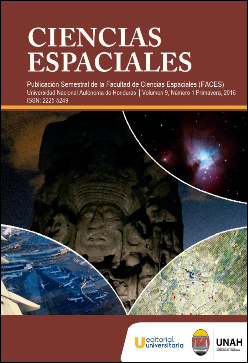Identification of risks due to natural disasters in the Matasnillo (Panama) and Goascorán (Honduras) watersheds, and their relation to climate change using Geographic Information Technologies
DOI:
https://doi.org/10.5377/ce.v9i1.3126Keywords:
Geographic Information Technologies, risks, disasters, threats, climate change, basinAbstract
Honduras and Panama are characterized by intense and long-last in grain fall, storms, severe electrical shock, floods, wildfires, marine tubes, tsunamis, episodes of the presence of El Niño, La Niña and spills of hazardous substances. On the other hand, Global climate change model syndicate that both countries are subject to severe changes, such as increased temperature, drought, more intense precipitation, more frequent storms and rising average sea level. This work is carried out under the University Program for Comprehensive Disaster Risk Management and Adaptation to Climate Change in Central America (PRIDCA) coordinated by the Central American University Council (CSUCA) and funded by the Swiss Agency for Development and Cooperation (COSUDE)- and where the National Autonomous University of Honduras and the International Maritime University of Panama, through an inter-university project decided, from the perspective of scientific and technological research, to develop strategies and actions to reduce risks of natural disasters in watersheds Rivers Matasnillo, Gulf of Panama, and the Goascorán River basin, Gulf of Fonseca, Honduras; and the relationship of climate change further comprising a transverse axis of involvement and owner ship of the process by the key players in the study areas, through the development of a methodology that enables the identification, analysis and classification of risk product identifying threats and vulnerabilities in the basins selected through the application of GIS technologies, as well as developing proposals and recommendations to minimize risks identified as high based on depth threat.
Downloads
2917




